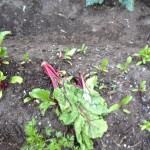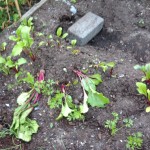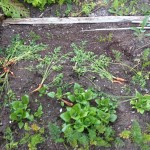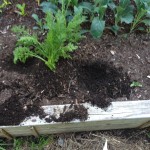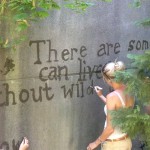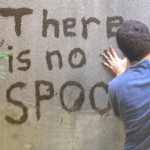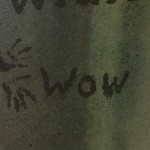Here it is, the project I have probably spent too long making, and only covered three of the songs on Mother Mother’s excellent 2012 album, The Sticks. The whole concept of this album is about the desire to leave behind the busy-ness of urban life and go into the wild, or rather the sticks. When I was reading the Ernest Callenbach novel Ecotopia last summer, this became the soundtrack to the groundbreaking environmental message: the old world can be ripped apart to make one of the most awesome and ecologically-sound countries in the world (combining Northern California, Oregon and Washington state – plus British Columbia would have made it Cascadia!). Unfortunately, no feature filmmaker adapted this fictional tale, but if I could have had it my way, it would have resembled one of the best movies of the 21st century, Christopher Nolan’s Inception. Here is a sample of what is to come:
The process of taking someone else’s creativity and making it into something new seems to belie creativity – others might argue it is genius. If I had the huge budget Nolan earned from directing a few Batman movies for Warner Brothers, I could make my own Ecotopia movie, perhaps even get a hip edgy band like Mother Mother to score the film with original music. I started work in the film industry around the same time as Nolan made his first feature film, the shoestring-budgeted The Following in 1998 (interestingly the main character share the same name and occupation as the theif Dom Cobb in the later film Inception). Obviously Nolan and I took different paths in life, and I sometimes wish I could be on the same sets and getting such amazing movies produced. Instead, I found that the remixing via YouTube, iMovie and other digital tools gets me closer to what I really want to see: a complex storytelling that contrasts familiar sounds and images. Here is the second video based off the track listing on The Sticks:
Each song matches up to one of the characters in this fascinating, mind-bending movie. If I had the time and the computer storage space, I would have got the entire album covered. Instead, I have to work “bit by bit” and will not be able to get to that song until later on in August. It will be matched up with the character Browning, the elderly businessman seen at the beginning of “The Sticks Robert” video above. Next up is perhaps the most familiar track on the album (the one that had the most radio play, in any case) “Let’s Fall in Love” dedicated to Mrs. Cobb, what seems like an anti-love song. It’s not, really, and hopefully the video captures some of the emotional roller-coaster-ness of the original sources.
Next, in honour of Kedrick’s choice words for our friends at Sauder, here is the fourth track listing, and perhaps the one that could get me in trouble with the law-abiding citizens these students purport to be. Yes, there is something inherently underhanded about what I am doing to the music and movie, and if I didn’t post the Copyright Act disclaimer on each of the YouTube uploaded video, they would be muted or taken down in the blink of an eye. I object to this irreligious piety towards restrictions on materials meant to be shared digitally. I point to masters of remix like the Gregory Brothers, Daft Punk or even Bob Dylan (see genius link above), and really hope to make something as new and catchy with this recycled material for this project.
Every really good movie has that one character who stands out from the others, not necessarily the protagonist, but the one who seems to be the most fun. Like how every kid playing Star Wars in the 1980s wanted to be Han Solo instead of Luke Skywalker – admit it, adults who never watched the series, you had the unwanted good guy role thrust upon you by more calculting schoolyard friends. If there is any song on this great album that matches Inception‘s trickster character, it is the ominous-sounding “Dread in My Heart” – apologies in advance for the inventively obscene language.
As wonderfully complex as the movie is, there is only so much material to be mined. Nolan is not so fond of releasing outtakes or alternate endings on DVD releases of his films, so no way that I will have access to a stash of Michael Caine as Miles footage, and as he is only in three key scenes, I have to find other ways to include these characters in more environmental ways – also fitting seeing as this blog post is for environmental literacy. You can follow this link to see what I have already posted for my current number one hit off the album, “Infinitesimal” but in the spirit of the completionist ethos I set out to achieve in this project, had to come up with something creative. Hope this works…
Stop me if this whole project seems a bit too hipsterish. Seriously, write a comment and send it to me saying STOP (you would probably be doing me a big favour so I can focus more of my attention on comps and grant applications). It goes against every fibre of being a hipster, even explicitly condemned in the handbook only a few of us are cool enough to know about have read. If you are ready to press on, you’ll next see the origin of this whole project, the one song that got me thinking about how Mother Mother and Inception could, nay must, be mashed up together. But first, here’s another version of “Happy” – yeah, not the Pharrell Williams one that has been done to death.
More to be posted soon 🙂

